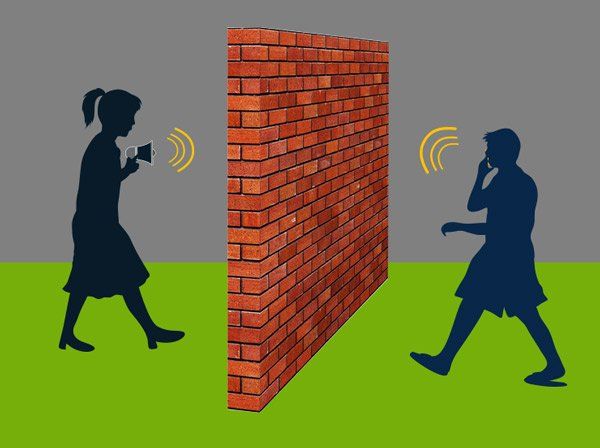3 min to read
Managing Cross-Cultural Communication Barriers
Nowadays, diversification is exemplary in most workplaces. With the growth of technology, it’s not uncommon to deal with clients and customers from all over the world. While this may be the new benchmark, the possible objections to diversity cannot be ignored. Language barriers may make it arduous to communicate adequately, or cultural disparity may impede internal and external customers from being convenient enough to open up, socialize, or bond. These potential issues may curb relationships
Nowadays, diversification is exemplary in most workplaces. With the growth of technology, it’s not uncommon to deal with clients and customers from all over the world. While this may be the new benchmark, the possible objections to diversity cannot be ignored.
Language barriers may make it arduous to communicate adequately, or cultural disparity may impede internal and external customers from being convenient enough to open up, socialize, or bond.

These potential issues may curb relationships in the workplace; therefore, if you plan to do business on a global level, you need to find solutions to break down any barriers.
Here are some ways that will help you:
1. Learn a few key phrases
Clear communication is crucial for compelling functioning, each of your employees must understand what your clients and customers need. Depending upon the number of clients or customers with whom you work and the amount of diversification, it may not be possible for you to learn all the languages, but learning a few greetings and key phrases can go a long way.
You may want to consider the form of a foreign language or cross-cultural training for employees who deal with clients of a specific culture. Amass a list of books and put them on a “recommended reading” list. One good one is “Kiss, Bow or Shake Hands: The Bestselling Guide to Doing Business in More Than 60 Countries” by Terri Morrison and Wayne A. Conaway.
2. Know about your client’s culture
Taking the time to research or inquire about another’s culture can go a long way to making them feel comfortable. Learn about the things your clients and customers like and value: their food, their customs and protocol, business practices, and what they do for fun.
Since there is a host of information available online, you can easily discover the basic credo of their culture. Because of your extra effort, the people with whom you work will feel appreciated and will be more apt to recommend you and do business with you in the future.
3. Bolster gratitude for cultural differences
Set aside a special day where you ask a few employees or co-workers to share aspects of her culture or a client’s culture with everyone. Make it fun. Ask the employees to give a “Lunch-and-Learn” presentation featuring the foods, ceremonies, and other aspects of that culture.
This will not only promote socialization, but it will also give each person the opportunity to learn about and appreciate one another’s culture. Also, you can invite your employees to write a feature article in your newsletter or internal communications about a particular culture.
4. Always aspire to learn new things
While traveling to visit clients in other countries, be open to trying new things like the food at least once. Even if you don’t like something, you will be appreciated for making the effort.
If you are allergic or prefer not to devour something like drinking alcohol do not compromise your values, however, accommodate theirs. You are permitted to respectfully decline. The idea is not to create boundaries but to build bridges and open the door to cultural differences.
5. Be Hospitable
If your employees, clients, or co-workers have cultural requirements, like prayer times or religious holidays, accommodate their needs into your work schedule. You would certainly want someone to respect your culture if the tables were turned.
Regardless of your business type, keep an open mind. Know that your way is not the only way. You don’t need to change your culture or convince others to change theirs, but rather, find common ground where everyone can understand each other and respect and embrace cultural differences.
🚀 Try Codersera Free for 7 Days
Connect with top remote developers instantly. No commitment, no risk.
Tags
Trending Blogs
Discover our most popular articles and guides
10 Best Emulators Without VT and Graphics Card: A Complete Guide for Low-End PCs
Running Android emulators on low-end PCs—especially those without Virtualization Technology (VT) or a dedicated graphics card—can be a challenge. Many popular emulators rely on hardware acceleration and virtualization to deliver smooth performance.
Android Emulator Online Browser Free
The demand for Android emulation has soared as users and developers seek flexible ways to run Android apps and games without a physical device. Online Android emulators, accessible directly through a web browser.
Free iPhone Emulators Online: A Comprehensive Guide
Discover the best free iPhone emulators that work online without downloads. Test iOS apps and games directly in your browser.
10 Best Android Emulators for PC Without Virtualization Technology (VT)
Top Android emulators optimized for gaming performance. Run mobile games smoothly on PC with these powerful emulators.
Gemma 3 vs Qwen 3: In-Depth Comparison of Two Leading Open-Source LLMs
The rapid evolution of large language models (LLMs) has brought forth a new generation of open-source AI models that are more powerful, efficient, and versatile than ever.
ApkOnline: The Android Online Emulator
ApkOnline is a cloud-based Android emulator that allows users to run Android apps and APK files directly from their web browsers, eliminating the need for physical devices or complex software installations.
Best Free Online Android Emulators
Choosing the right Android emulator can transform your experience—whether you're a gamer, developer, or just want to run your favorite mobile apps on a bigger screen.
Gemma 3 vs Qwen 3: In-Depth Comparison of Two Leading Open-Source LLMs
The rapid evolution of large language models (LLMs) has brought forth a new generation of open-source AI models that are more powerful, efficient, and versatile than ever.